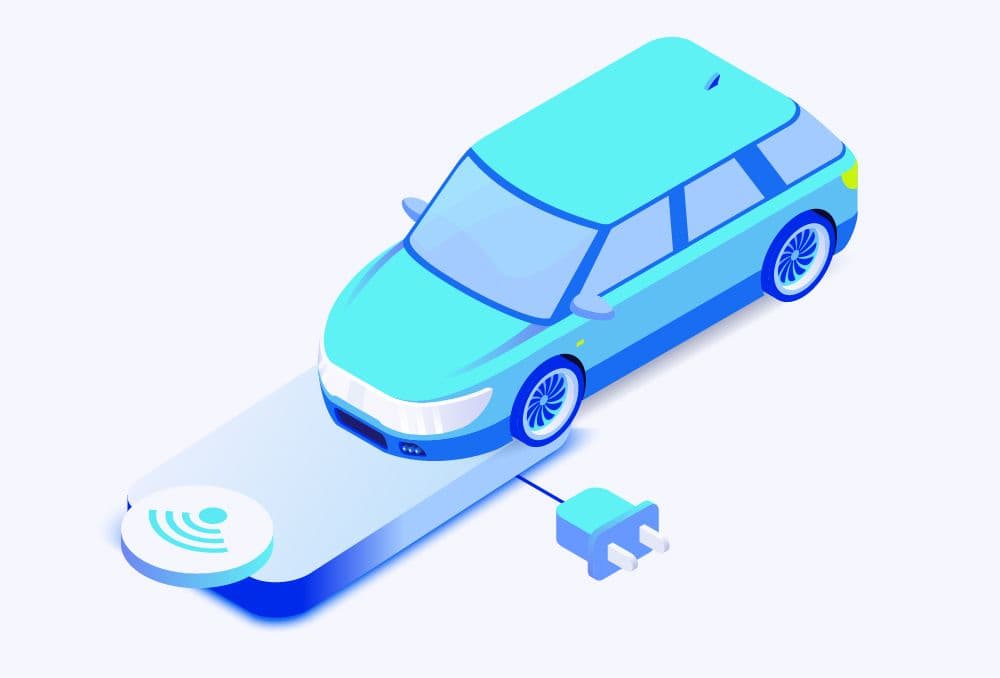It wasn't that long ago when electric cars were nothing short of a pipe dream and a daring vision of the future. It didn't take that much time for it to become the new reality, still in development, but definitely no longer a futuristic delusion. As much as there's yet a lot of work at the grass root to be carried out, especially in terms of the charging infrastructure, major technological advancements can be observed at any level of eMobility undertakings.
This is further true when we take a closer look at some of the latest trends in eMobility. We can see that many new technologies are being developed to make electric cars more efficient, more reliable and cheaper to maintain. Some of these trends include:
- Battery Swapping Technology - allows for the quick and easy exchange of batteries in electric vehicles. This means that drivers will no longer have to wait for their batteries to charge, which will make electric cars more convenient to use.
- Wireless Charging Technology - allows drivers to charge their electric vehicles without having to plug them into a charging station. instead, they can simply place their car on a special pad that will wirelessly charge the battery.
- Solar Charging Technology - allows electric vehicles to be charged by the sun. Solar panels can be used to collect solar energy and then convert it into electrical energy that can be used to charge an electric vehicle. This renewable source of energy will make it easier for people to use electric cars.
- Electric Vehicle Battery Management Systems - helps to keep electric vehicle batteries healthy and working properly. These systems can monitor the battery's health, charge level, and temperature. They can also help to extend the life of the battery.
- Ultra-fast Charging Stations - can charge an electric vehicle's battery in a matter of minutes. This will make it easier for people to use electric cars, as they will not have to wait long for their batteries to charge.
- Connected and Self-driving Cars - these cars are connected to the internet and can drive themselves
- Big Data and Predictive Analytics for Electric Vehicles - can help to predict when an electric vehicle will need to be charged. It can also help to find the best route for an electric vehicle to take.
- Blockchain Technology for Electric Vehicles - can help to secure data about electric vehicles. It can also help to provide a way for people to pay for electric car charging.
- Virtual Power Plants - can help to create a network of electric vehicles that can provide power to a grid
Wireless charging
In this entry, wireless charging is what we’re going to focus on. First, let’s see what wireless charging is in general. Wireless charging is a technology that allows devices to be charged without the need for a physical connection (i.e. through the cable). This means that instead of plugging your device into a power outlet, you can simply place it on a wireless charging pad. What's interesting is that the first prototypes of such technology were created by Nikolai Tesla, back in the late 1800's, when he managed to transmit the electricity through air.
How does wireless charging work?
Wireless charging technology uses an electromagnetic field to transfer energy between a charging pad and a device. The charging pad is connected to a power outlet, and the device has a built-in receiver that converts the energy into electricity that can be used to charge the battery. This is accomplished by using a copper coil, which creates an oscillating magnetic field. The receiver then converts the current into DC power, which is used to charge the battery.
There are mainly two types of wireless charging: inductive and resonant. Inductive charging is the most common type, and it uses magnetic fields to transfer energy between the charger and the device. Resonant charging uses electromagnetic resonance to transfer energy, and it is less common.
Wireless EV charging
Now, how does it work for EVs? There isn’t any difference to how this happens with electric cars. The car charging session starts when electricity is transferred from one magnetic coil in the charger to another by way of an induction process. The coils need both be aligned with each other, which means that the driver has to park directly over it to enable the charging event. The wireless chargers come in the shape of a flat pad, making it relatively easy to maneuver the car over them.
Wireless EV charging is still in its infancy but there are already a few companies working on the technology, including big automotive players like BMW or Volvo. The big obstacle in working with wireless charging is the lack of broad, widely-accepted standardization. Here’s where The Society of Automotive Engineers has come to help by developing a standard for wireless EV charging, which should help to speed up the adoption of the technology.
SAE J2954
SAE J2954 is the aforementioned standard for wireless EV charging. In the official documentation about the standard we read:
“ The SAE J2954 standard establishes an industry-wide specification that defines acceptable criteria for interoperability, electromagnetic compatibility, EMF, minimum performance, safety, and testing for wireless power transfer (WPT) of light-duty plug-in electric vehicles. The specification defines various charging levels that are based on the levels defined for SAE J1772 conductive AC charge levels 1, 2, and 3, with some variations. A standard for WPT based on these charge levels enables selection of a charging rate based on vehicle requirements, thus allowing for better vehicle packaging and ease of customer use. The specification supports home (private) charging and public wireless charging.”
The charge levels mentioned above are (at least for now): 3.7kWh, 7kWh and 11kWh, leaving the room for improvements in this area for sure. The standard’s development took almost a decade, meaning that the upcoming changes may take a bit of time to be included.
Wireless EV charging - the benefits and the obstacles
For as long as wireless charging remains in its infancy, it's a bit hard to speak about the advantages, as currently there aren't many in practical use. Although, it doesn't mean that the technology itself won't have much to offer in case it gets developed to the point of mass adoption.
Wireless charging for electric vehicles would be a convenient and efficient way to keep your car charged without the hassle of dealing with cords and plugs or finding a parking spot near a charging station. Wireless charging would make a perfect case scenario for electric taxis or buses, which all have their frequent stops. Such an undertaking is already taking place in Gothenburg, Sweden. The pilot project involves a fleet of taxis (consisting of the electric Volvo XC40s) and a suite of charging pads developed by an US company - Momentum Dynamics. The chargers are installed in specially prepared parking spaces. Such a venture allows not only for the electric taxi fleet to remain charged but also makes up for a great test-environment to gather the data, learn about some issues and implement solutions.
However, before we ever get to witness and enjoy the giftings of wireless charging, there are some quite substantial obstacles to overcome.One of the biggest obstacles to widespread adoption of wireless EV charging is the lack of infrastructure. Wireless chargers need to be installed in convenient locations where EV owners can easily access them, and right now there are very few public places that offer wireless charging. This means that most people who want to use wireless charging will have to install a charger at their home or workplace, which can be expensive and time-consuming.
Wireless charging technology is still in its early stages of development, and there are a number of technical challenges that need to be overcome before it can be widely used. For example, current wireless chargers can only transfer a limited amount of power, which means that they can take a long time to charge an EV. These technical challenges are being addressed by research and development, but it will take some time before they are resolved.
Wireless charging technology is currently more expensive than traditional wired charging, both in terms of the initial cost of the equipment and the cost of installation. This is one of the main reasons why wireless charging has not been more widely adopted so far. However, as the technology develops and becomes more widespread, the costs are likely to come down.
There are some safety concerns associated with wireless EV charging, as the chargers emit electromagnetic fields (EMFs). Although there is no evidence that EMFs are harmful to humans, some people are still worried about the potential health effects. These concerns need to be addressed before wireless charging can be fully accepted by the public.
Wireless EV charging is a promising technology that has the potential to make EV ownership more convenient and reduce the environmental impact of transportation. However, there are a number of obstacles that need to be overcome before it can be widely adopted. These include the lack of infrastructure, technical challenges, cost, safety concerns, and the lack of standardization. With continued research and development, these obstacles can be overcome and wireless charging can become a mainstream technology.

